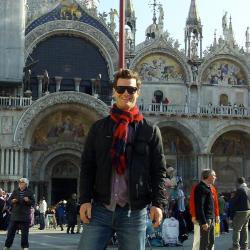“There are no VIPs in Iceland,” Þórey Eva Einarsdóttir says in regard to the Reykjavík Fashion Festival (RFF), which she is directing this year for the third time.
Þórey tells me she among others has been working hard to perfect the festival’s formula over the last three years, trying to make it as inclusive as possible. “In a small and young market like Iceland,” she says, “local sales are the foundation of an up-and-coming label and it’s important to show gratitude to loyal customers.” Whereas at another big fashion rendezvous you would have to be ‘someone’ to attend, the three-day festivities taking place at Harpa welcome all fashion enthusiasts. Plus, the show will be streamed online again this year.
Champagne Idea
RFF gives the city’s local fashion scene invaluable exposure, both locally and internationally, and its very existence is a testament to the creative forces running rampant in Reykjavík. As a young festival, however, Þórey notes that RFF faces the daunting task of bringing together “players from different leagues who don’t play the game the same way.”
She claims that her “biggest victory” so far has been to bring Wolfram Glatz onboard two years ago. The founder and head of creation at German design agency Atelier Kontrast, he brings valuable experience to the festival. “It was pivotal that the celebration got seasoned input,” she says, noting that she doesn’t have a fashion background herself. “It has to grow steadily, step by step, and it must never compromise on quality.”
The festival’s committee establishes this ‘quality control’ from the very beginning, carefully selecting brands that are both deemed sufficiently mature to participate mixed with younger brands. “It takes several collections for a designer to clearly establish an aesthetic,” Þórey says. It goes without saying that a fashion show open to international media isn’t the place to bomb.
It’s important for designers participating in RFF to step up their game, she says, to show that they understand their clothing, as well as how to direct make-up and hair teams. To that end, RFF has worked closely with the designers, even hiring models so that the designers don’t have to rely on their aunts and nieces. “It has to be more than just walking clothes—it has to be a show.” At the same time, she says RFF encourages creators to be pragmatic about their presentations. “It’s no good to have champagne ideas on a beer budget.”
When The Corks Stop Popping
The post-collapse Iceland that Þórey returned to after a decade-long sojourn abroad was far from the glitz and glamour that it had been only a few years earlier. “The party was over, everyone had a hangover, and I had to pick up the bill,” she says, metaphorically. “On the upside though, humility came back to people who had bought into the economic craze too much and this has made it easier to implement new ideas and concepts.”
In this vein, Þórey hopes that an increased conscientiousness about consumer practices will take hold here, breaking Icelanders’ frequent habit of satiating sartorial hunger abroad where clothes are often cheaper. Þórey’s idea, however, is to bring ‘slow fashion’ to Iceland. Borrowing its name from the ‘slow food’ movement, slow fashion encourages people to buy quality fashion locally. “It’s important to start this conversation so that people can make educated decisions,” she says. “People have to think, ‘If I buy this I’m supporting a local designer and the money stays here.’”
—
You can get your runway ticket here.
Buy subscriptions, t-shirts and more from our shop right here!


















